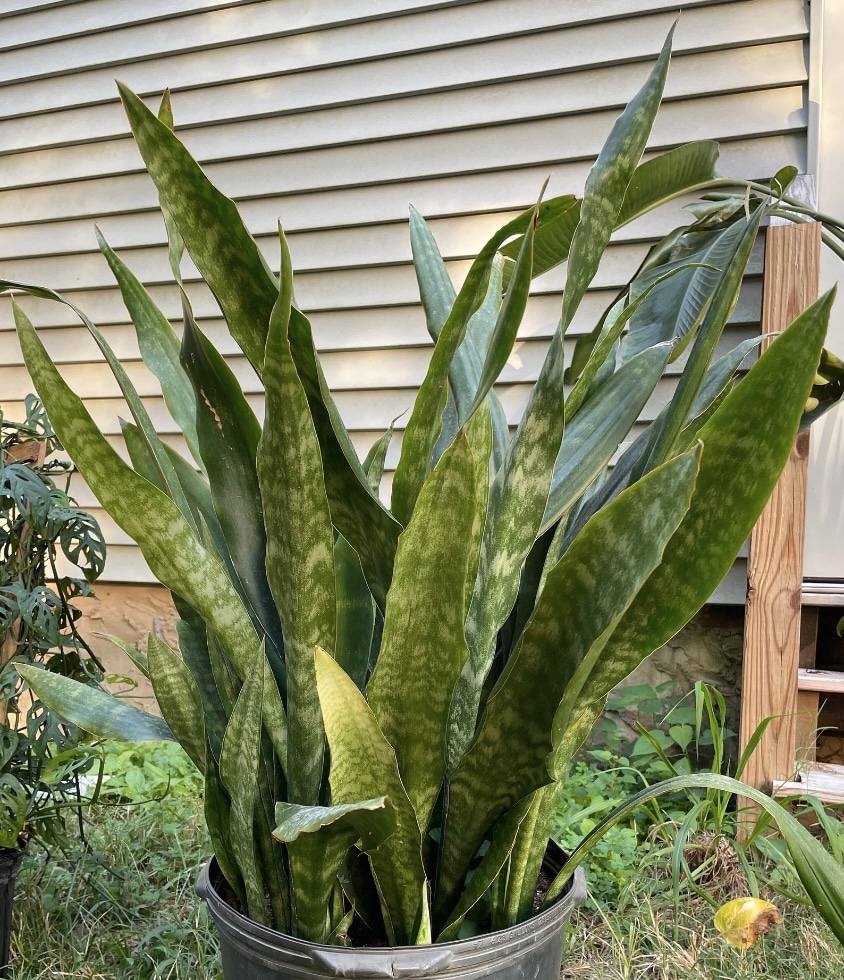The snake plant, or Sansevierias, is a hardy succulent. It’s one of the most popular houseplants in the world, and for a good reason – it’s easy to care for and very tolerant of neglect. It can even survive in low-light conditions.
There is a lot of debate on whether or not snake plants can live outside. Some people swear by their outdoor snake plants, while others claim that they always die.
So, what’s the truth? Can snake plants live outside or not?
This blog post will explore the answer to that question and help you decide if an outdoor snake plant is right for you!
Can Snake Plants Live Outside?
Sansevierias are a type of succulent plant that is native to Africa. These plants are also known as snake plants or mother-in-law’s tongue. Sansevierias are incredibly resilient and can tolerate periods of neglect. As a result, they are often used as houseplants. However, some people wonder if these plants can also be grown outdoors.
But can they also survive outdoors? The answer is yes.
When grown outdoors, these plants need full sun and well-drained soil. They are also quite tolerant of drought and can withstand brief flooding periods.
Sansevierias tolerate various conditions, including full sun or partial shade, low humidity, and poor soil drainage. These plants will thrive if they have access to bright light.
While they can tolerate hot temperatures, protecting them from the direct midday sun, which can scorch the leaves, is essential. In terms of watering, sansevierias should be allowed to dry out completely between waterings. Overwatering can lead to root rot, so it is essential to err on the side of caution.
Overall, sansevierias are very tough plants that can adapt to various conditions. While they are typically grown as houseplants, there is no reason why they could not be successfully grown outdoors in locations with warm climates and bright light.
Growing A Snake Plant Outdoors
Growing a snake plant outdoors can be a great option if you live in an area with a warm climate and bright light. These plants are very tough and can tolerate a wide range of conditions.
Temperature
They can thrive in various climates, from the United States’ USDA zones 8 through 11, which range from 55 to 90 degrees Fahrenheit. They are more sensitive to cold than most plants and will not survive more than a few days at temperatures below 50 degrees Fahrenheit.
However, they can be grown indoors in cooler climates if they are given enough light and warmth.
Light
Sansevierias need bright light to thrive, but they can tolerate low-light conditions. If you live in an area with a lot of sunlight, it’s best to plant your snake plant in a spot that receives partial shade. This will protect the leaves from scorching.
Soil
As for the potting mix, you can buy a cactus or succulent potting mix at your local garden center.
Watering
Water is essential for all plant life, but some plants require more water than others. Snake plants (also known as sansevierias) are a type of succulent that belongs to the lily family. Snake plants do not require much water to survive; they can even go for several weeks without being watered. When the soil has completely dried out, the ideal time to water snake plants.
Things To Avoid
You should avoid a few things if you want your snake plant to thrive.
First, do not over-water the plant. Snake plants are very tolerant of drought and can go several weeks without being watered. However, too much water can lead to root rot, so it is important to avoid caution.
Second, snake plants do not like super chilly temperatures. If the temperature drops below 50 degrees Fahrenheit, the plant will not survive.
Finally, do not forget to check your plant for pests and diseases. Although snake plants are tough, they are not immune to pests and diseases. If you notice any problems, be sure to take action immediately.
Conclusion
Overall, sansevierias are very tough plants that can adapt to various conditions. While they are typically grown as houseplants, there is no reason why they could not be successfully transplanted outdoors in locations with warm climates and bright light. With a little care and attention, your snake plant will thrive for years.

